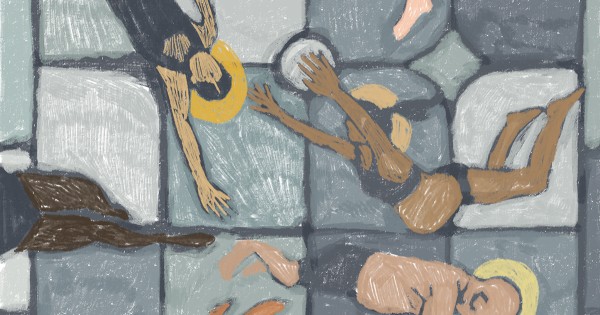I was raised in churches where the central focus was a simple, backlit cross positioned high above the pulpit. The Baptist tradition typically avoids visual depictions, opting instead for a river scene above the baptistry to commemorate Jesus’ baptism. However, in my church, images were reserved for Sunday school materials, and our sanctuary thrived on the power of the Word, hymns, and sermons to fuel our imaginations.
Occasionally, I would visit my friend’s church as a child, where colorful statues and stained-glass windows adorned with depictions of Bible stories, saints, and martyrs captured my envy. While the cross in her church portrayed a perpetually suffering Christ, I longed for the richness of visual stimuli amidst the flowing words from the pulpit. There was a part of me that yearned for nourishment through visual experiences, not just auditory ones.
This hunger for visual stimulation was significantly satiated when I encountered the Room of the Segnatura during a visit to the Vatican in my late forties. The room, originally intended as a papal library for contemplation, now serves as a passageway for countless tourists who often overlook Raphael’s magnificent frescoes, particularly The School of Athens.
The School of Athens stands as the most renowned fresco in the room, positioned opposite Raphael’s homage to theology. With literature and law depicted on the shorter walls, the interconnected frescoes symbolize the collaboration of reason, revelation, and imagination—an enduring belief shared by educated Christians throughout history. This visual masterpiece challenges the assumptions ingrained in me by my Baptist upbringing and academic studies, which tended to downplay the significance of human imagination and the compatibility of Christianity with philosophy.
Raphael’s portrayal of classical philosophy in The School of Athens places humanity at the center, albeit dwarfed by the surrounding context. The painting captures the essence of philosophy as a collective endeavor within a vast world, with Plato and Aristotle engaging in a lively debate at its focal point. Plato gestures upward, symbolizing the pursuit of eternal truths, while Aristotle points forward, emphasizing the importance of empirical knowledge and the tangible world. Their animated discussion reflects a deeper unity in the quest for understanding and truth.
In my teachings, I often utilized a detail from The School of Athens featuring Plato and Aristotle to underscore the ongoing dialogue inherent in philosophy. Little did my students know that this image held personal significance for me—an embodiment of my journey from a Platonist upbringing to an Aristotelian perspective shaped by motherhood, a transformative experience that redefined my understanding of the body and soul.
As I delved deeper into Aristotle’s teachings, initially resistant to his style and concepts, I gradually uncovered the wisdom embedded in his works. The contrast between Plato and Aristotle’s views on human virtue and suffering resonated with me, reflecting the struggles I witnessed in my own family dynamics. While Plato emphasized the incorruptibility of the soul, Aristotle acknowledged the potential vulnerability of virtuous individuals to external misfortunes.
The shift from abstract contemplation to embodied experience became palpable during my first pregnancy, redirecting my focus from intellectual pursuits to a profound connection with my changing body. Motherhood illuminated the intricate interplay between physical sensations and emotional resonance, leading me to appreciate the unity of body and soul in a new light.
The revelation of hylomorphism, the Aristotelian concept that the soul is inseparable from the body, offered a fresh perspective on the relationship between physicality and spirituality. This realization, coupled with the transformative power of motherhood, reshaped my understanding of mortality and mourning, guiding me towards a deeper appreciation for the interconnectedness of human existence.
In moments of profound loss and vulnerability, such as the passing of my brother, the essence of human connection and compassion transcended philosophical abstractions. Holding his hand in his final moments underscored the intrinsic value of physical presence and emotional support, embodying a profound truth echoed in Plato’s _Symposium_—that love manifests in nurturing both physical and intellectual beauty.
Through the lens of motherhood and personal grief, I have come to embrace the intertwining of mortal bodies and immortal souls, recognizing the inherent wisdom in embracing life’s transient nature. As I navigate the complexities of existence, I find solace in the enduring bond between physicality and spirituality, where wisdom unfolds in the tender embrace of shared humanity.
